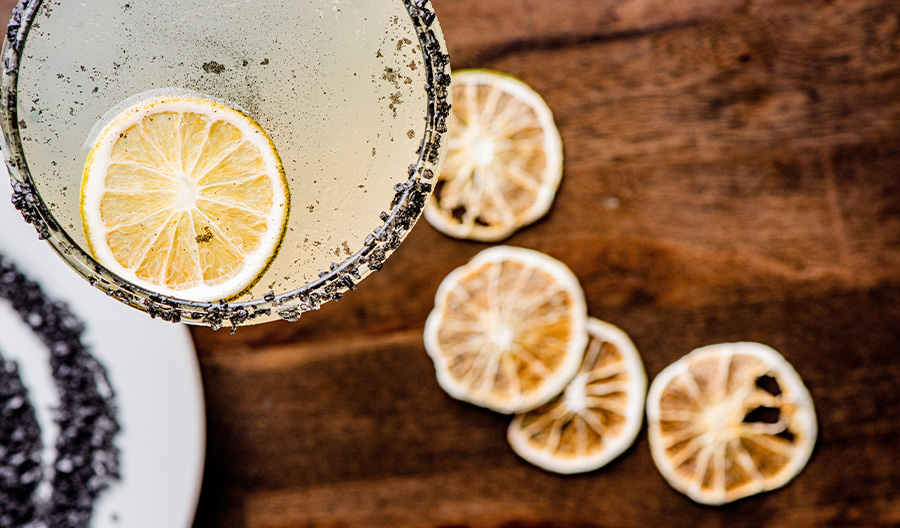The three-ingredient Tommy’s margarita is widely considered a modern classic. But few realize that this simple mix of tequila, agave nectar and fresh lime juice forever altered the course of American cocktail culture—and arguably kickstarted the current craze for agave spirits.
Renowned bartender Tony Abou-Ganim had his first Tommy’s margarita in 1995, a few years after it was created in a San Francisco restaurant. It was the best margarita he’d ever had up until that point. The use of fresh citrus and 100%-agave tequila seemed radical, at the time.
“Sure, we had a few tequila brands available, but definitely nowhere close to the selection we have today,” Abou-Ganim says. “Tommy’s was ground zero for 100% agave tequila.”
That’s why many in-the-know mixologists credit the Tommy’s margarita for the rise—and current obsession—with agave spirits in the United States. Here’s everything to know.
What’s the Difference Between a Margarita and a Tommy’s Margarita?
Tommy’s marg notably doesn’t contain orange liqueur, as the restaurant had allegedly cut the essential margarita ingredient from its formula. Losing that element of sweetness, which can easily cover up low-quality ingredients, placed a greater emphasis on the freshness of the citrus and the quality of the tequila. That attention to detail may seem like no big deal today, but was groundbreaking 20-something years ago.
In fact, it was the Tommy’s that inspired Abou-Ganim—one of the pioneers of the modern day cocktail revolution—to use fresh limes. An early adopter of the practice, he remains ardently committed to doing so everywhere he works.

Though the Tommy’s margarita certainly helped to spread the gospel of fresh citrus, the way it evangelized quality tequila was truly game-changing. “It highlights the spirit itself and doesn’t detract from that in any way,” says the beverage director at a cocktail bar in NYC. “You taste the tequila and only the tequila.”
But back when the drink was first created, that wasn’t necessarily a good thing. When one bartender first tried Tommy’s margarita, in either 1999 or 2000, he had a pretty low opinion of tequila. He couldn’t stomach the widely-used cheap brands, he says, and hadn’t had a margarita with quality tequila until he walked into the restaurant that originated Tommy’s margarita. His perception was forever changed.
“In its simplicity, it really boosts quality 100%-agave tequilas, but can also show the flaws in bad tequilas,” he says. “The spread of the Tommy’s marg and its story has definitely helped in the agave boom.”
From San Francisco to Across the Globe
Proof of the drink’s impact is in the numbers. The U.S. agave market has skyrocketed over the past few years: In 2022 alone, nearly 30 million nine liter cases of tequila and mezcal were sold, according to the Distilled Spirits Council of America—a 273% volume increase from 2003.
Much of its success is due to its original creator traveling and taking his family’s recipe and story on the road with him over the last 25 years. His energy and tequila knowledge and passion for tequila helped to make this drink infectious around the world. Tommy’s margaritas are now served in cocktail bars across the globe; It can even be found on bar menus in small towns in New Zealand and South Africa.
Dominic Venegas, a bartender turned spirits brand ambassador, says he’s seen a number of variations on the drink sprout up in recent years, including ones with saline, lime juice blends, flavored agave nectar and other sweeteners like honey and molasses. Still, he prefers the original.
“It always seems to start a conversation about its origins, relevance in cocktail evolution, discussions about classics or love for agave,” he says.
Plus, Tommy’s margarita is absolutely crushable.
How to Make a Tommy’s Margarita
Ingredients
2 ounces of 100% agave blanco tequila
1 ounce fresh lime juice
½ ounce agave nectar
Lime wedge, to garnish
Directions
Add all ingredients to a cocktail shaker. Add ice and shake. Strain over ice in a rocks glass. Garnish with a lime wedge.

